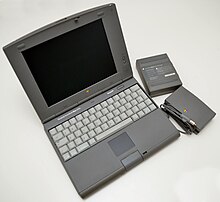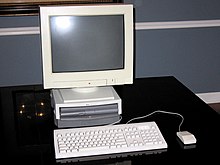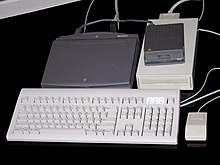
The Power Macintosh, later Power Mac, is a family of personal computers designed, manufactured, and sold by Apple Computer, Inc as the core of the Macintosh brand from March 1994 until August 2006.

The PowerBook is a family of Macintosh laptop computers designed, manufactured and sold by Apple Computer from 1991 to 2006. During its lifetime, the PowerBook went through several major revisions and redesigns, often being the first to incorporate features that would later become standard in competing laptops. The PowerBook line was targeted at the professional market. In 1999, the line was supplemented by the home and education-focused iBook family.

The PowerBook G3 is a series of laptop Macintosh personal computers designed, manufactured, and sold by Apple Computer from 1997 to 2001. It was the first laptop to use the PowerPC G3 (PPC740/750) series of microprocessors, and was marketed as the fastest laptop in the world for its entire production run. The PowerBook G3 was succeeded by the PowerBook G4.

A processor direct slot (PDS) is a slot incorporated into many older Macintosh models that allowed direct access to the signal pins of a CPU, similar to the functionality of a local bus in PCs. This would result in much higher speeds than having to go through a bus layer, such as NuBus, which typically ran at a slower 10 MHz speed.
Outbound Systems, Inc., was an American computer company based in Boulder, Colorado. Founded by Warren Conner in 1989, the company offered Macintosh clone computer systems in various portable form factors between 1989 and 1991. It left the Mac conversion business in 1992 to build windows-based desktop computers before going bankrupt in 1993.

The PowerBook 500 series is a range of Apple Macintosh PowerBook portable computers first introduced by Apple Computer with the 540c model on May 16, 1994. It was the first to have stereo speakers, a trackpad, and Ethernet networking built-in.

The PowerBook 3400c is a laptop computer in the PowerBook line manufactured by Apple Computer from February to November 1997. It was briefly the fastest laptop in the world. Using the PowerPC 603e processor running at speeds of up to 240 MHz, this PowerBook was the first to feature a PCI architecture, EDO memory, and a 64-bit wide, 40 MHz internal bus. It was also the first PowerBook to feature a PC card slot capable of being used as a zoomed video port. Like all Apple laptops since the PowerBook 500 series, it featured a built-in trackpad as the pointing device.

The Macintosh Quadra 605 is a personal computer designed, manufactured, and sold by Apple Computer from October 1993 to July 1996. The model names reflect a decision made at Apple in 1993 to follow an emerging industry trend of naming product families for their target customers – Quadra for business, LC for education, and Performa for home. Accordingly, the Performa 475 and 476 was sold in department stores and electronics stores such as Circuit City, whereas the Quadra was purchased through an authorized Apple reseller.
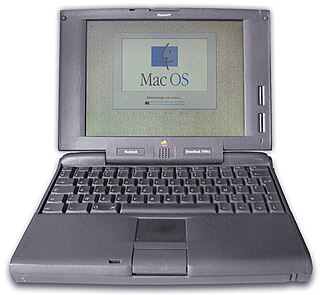
The PowerBook 5300 is the first generation of PowerBook laptops manufactured by Apple Computer to use the PowerPC processor. Released in August 1995, these PowerBooks were notable for being the first to feature hot-swappable expansion modules for a variety of different units such as Zip drives; PC Card slots as standard; and an infrared communication port. In common with most preceding Macintosh portables, SCSI, Serial, and ADB ports were included as standard. An internal expansion slot was also available for installing a variety of modules including Ethernet and video cards to drive a second monitor in mirroring or dual-screen modes.

The Power Macintosh 4400 is a personal computer designed, manufactured and sold by Apple Computer, Inc. from November 1996 to February 1998. It differs from prior desktop Macintosh models in that it was built with industry-standard components such as an IDE hard drive and an ATX-like power supply.

The Power Macintosh 6200 is a series of personal computers designed, manufactured, and sold by Apple Computer from May 1995 to July 1997. The 6200 is the PowerPC-based replacement for the Quadra 630, with the same form factor and price range. In early 1997, the rather different Power Macintosh 6300/160 / Performa 6360 based on the Power Macintosh 6400 was introduced. The whole line was discontinued when the desktop model of the Power Macintosh G3 was released.
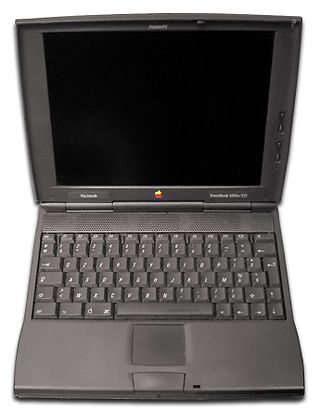
The PowerBook 1400 is a notebook computer that was designed and sold by Apple Computer, Inc. from 1996 to 1998 as part of their PowerBook series of Macintosh computers. Introduced in October 1996 at a starting price of $2,499, it was the first new PowerBook after the controversial PowerBook 5300. After the introduction of the more powerful PowerBook 3400c in February 1997, the 1400 took on the role of Apple's entry level notebook and remained there until its discontinuation in May 1998. Its successor, the PowerBook G3 Series, would ultimately go on to replace and consolidate not only the 1400, but the 2400c and 3400c as well.
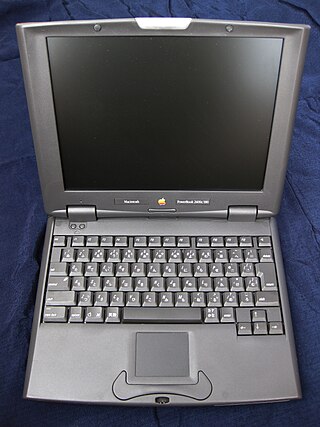
The PowerBook 2400c is a subnotebook in Apple Computer's PowerBook range of Macintosh computers, weighing 4.4 pounds (2.0 kg). Manufacturing was contracted to IBM Japan. In a return to the PowerBook 100 form factor, it was introduced in May 1997 as a late replacement for the PowerBook Duo 2300c, which had been the last of the subnotebook PowerBook Duo series. The 2400c was discontinued in March 1998, with no immediate replacement — the model that followed it was the much larger PowerBook G3 Series. However, in Japan a 2400c with a 240 MHz CPU was offered shortly after the original model's discontinuation, until the end of the year.

The Power Macintosh 5200 LC and Power Macintosh 5300 LC were a line of personal computers that are a part of Apple Computer's Power Macintosh, LC, and Performa families of Macintosh computers. When sold to the consumer market, the machines were marketed as variations of Performa 5200 and Performa 5300.
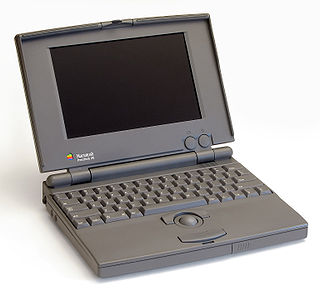
The PowerBook 100 is a portable subnotebook personal computer designed and manufactured by Sony for Apple Computer and introduced on October 21, 1991, at the COMDEX computer expo in Las Vegas, Nevada. Priced at US$2,500 with external floppy drive, the PowerBook 100 was the low-end model of the first three simultaneously released PowerBooks. Its CPU and overall speed closely resembled those of its predecessor, the Macintosh Portable. It had a Motorola 68000 processor at 16 MHz, 2-8 megabytes (MB) of RAM, a 9-inch (23 cm) monochrome backlit liquid-crystal display (LCD) with 640 × 400 pixel resolution, and the System 7.0.1 operating system. It did not have a built-in floppy disk drive and was noted for its unique compact design that placed a trackball pointing device in front of the keyboard for ease of use.

The PowerBook 180 is a portable computer released by Apple Computer along with the PowerBook 160 in October 1992. At the time, it constituted the new top-of-the-range model, replacing the previous PowerBook 170. Its case design and features are the same as that of the 170, but it shipped with the more powerful 33 MHz Motorola 68030 CPU and Motorola 68882 FPU. Along with the 160, it introduced a new power-saving feature which allowed the processor to run at a slower 16 MHz rate, the same speed as the original 140.

The PowerBook 100 series is a line of laptop PCs produced by Apple Computer.

The PowerBook Duo 230 is a subnotebook personal computer introduced on October 19, 1992 by Apple Computer, Inc. Priced at US $2,610, the PowerBook Duo 230 was the high end model of the two simultaneously released PowerBook Duos, the lower end being the US $2,250 PowerBook Duo 210. With a 33 MHz Motorola 68030 microprocessor, 4 MB of RAM and an 80 or 120 MB SCSI hard disk drive, the PowerBook Duo 230 was nearly identical to the simultaneously released PowerBook 180 except for the smaller 9.1 inch greyscale "supertwist" passive-matrix LCD and the lack of a 68882 floating-point unit.
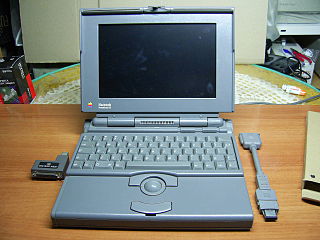
The PowerBook 160 is a portable computer that was released by Apple Computer along with the PowerBook 180 on October 19, 1992 and the PowerBook 165 variants were released the following year. At the time, it constituted the mid-range model replacing the previous PowerBook 140 in processing power. The PowerBook 160 was sold until August 16, 1993.

The PowerBook 150 is a laptop personal computer created by Apple Computer which was introduced on July 13, 1994, and released on July 18, 1994. It was the last member of the PowerBook 100 series to use the original case design, the most affordable of the series when introduced and also the last consumer model.

